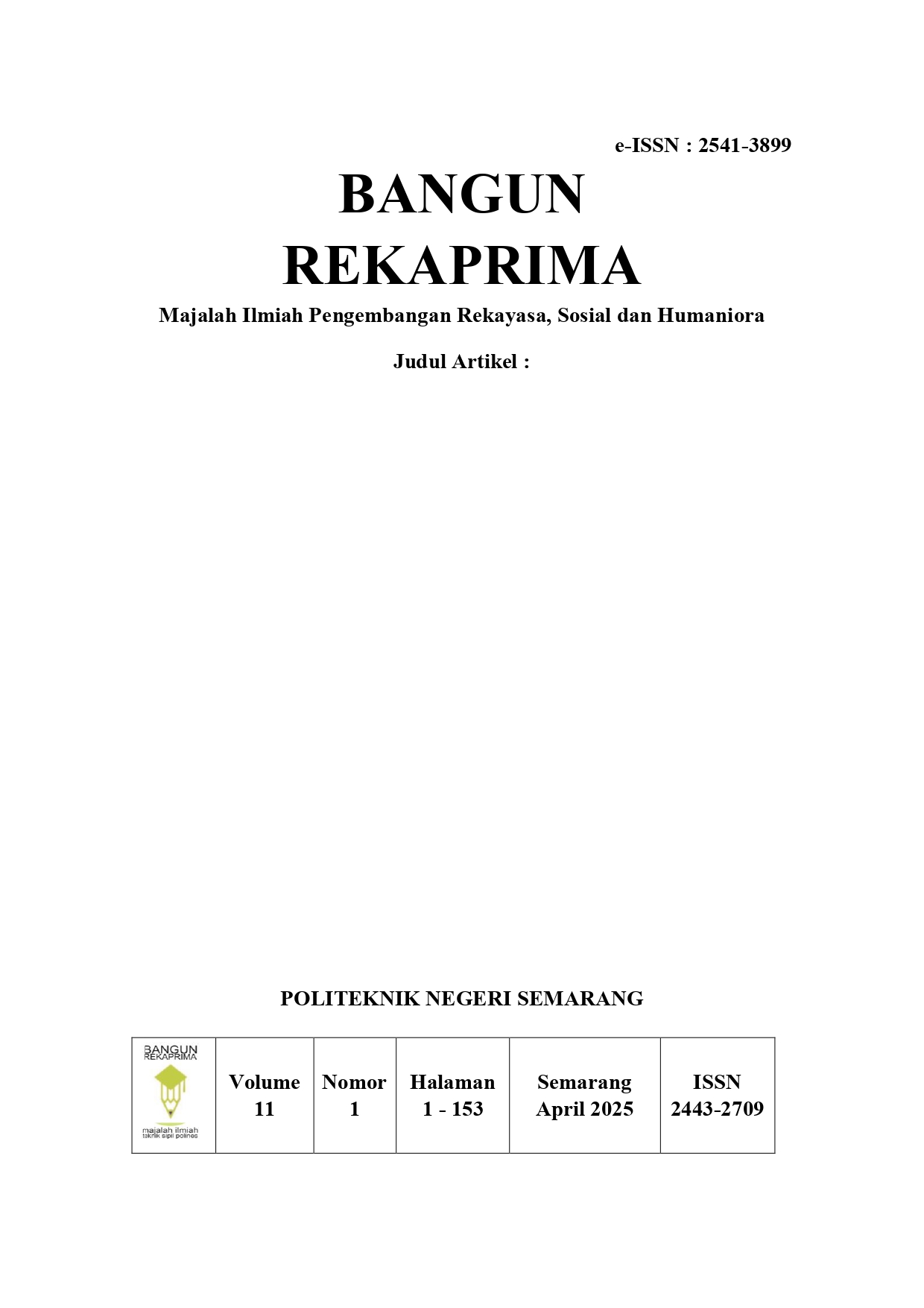PENDAMPINGAN PERBAIKAN LANTAI KERAMIK UPAYA PENINGKATAN KEAMANAN DAN KENYAMAN PROSES PEMBELAJARAN MI HUDALIL MUTTAQIEN KEDUNGPANAS
PENDAMPINGAN PERBAIKAN LANTAI KERAMIK UPAYA PENINGKATAN KEAMANAN DAN KENYAMAN PROSES PEMBELAJARAN MI HUDALIL MUTTAQIEN KEDUNGPANAS
DOI:
https://doi.org/10.32497/bangunrekaprima.v11i1.6387Keywords:
Education, Ceramic Floor Repair, Learning EnvironmentAbstract
The quality of education is not only determined by the curriculum and teaching methods, but is also influenced by the physical condition of the learning environment, including the comfort and safety of the classroom. MI Hudalil Muttaqien Kedungpanas is one of the elementary schools that deals with problems with physical facilities, especially damaged ceramic floors in several classrooms. This damage has an impact on disrupting the teaching and learning process, and has the potential to pose a safety risk to students and teachers. This community service program aims to improve the quality of learning facilities by repairing damaged ceramic floors. The method of implementing the activity includes a survey of initial conditions, preparation of technical plans, Procurement of materials, to the repair process which is carried out in stages in accordance with civil engineering principles. The results of the community service that have been carried out show that floor repairs have succeeded in creating a more comfortable, safe, and suitable classroom environment for learning activities. In addition to improving aesthetics and safety, these repairs also have a positive impact on student learning motivation. This community service activity confirms that adequate physical facilities are an important factor in creating a quality educational environment and supporting an optimal learning process.
References
Barrett, Peter, Alberto Treves, Tigran Shmis, Diego Ambasz, dan Maria Ustinova, 2019. The Impact of School Infrastructure on Learning: A Synthesis of the Evidence. Washington, DC: World Bank
Bluyssen, P. (2016). The role of flooring materials in health, comfort and performance of children in classrooms. Cogent Psychology, 3.
Cheryan, S., Ziegler, S., Plaut, V., & Meltzoff, A. (2014). Designing Classrooms to Maximize Student Achievement. Policy Insights from the Behavioral and Brain Sciences, 1, 12 - 4.
Graça, V., Kowaltowski, D., & Petreche, J. 2007. An evaluation method for school building design at the preliminary phase with optimisation of aspects of environmental comfort for the school system of the State São Paulo in Brazil. Building and Environment, 42, 984-999.
Hill, Mary C., and Kathryn K. Epps. 2010. "The Impact of Physical Classroom Environment on Student Satisfaction and Student Evaluation of Teaching in the University Environment." Academy of Educational Leadership Journal 14.4 : 65-79.
Hibbert, R. (1938). Equipment, Apparatus, and Supplies. Review of Educational Research, 8, 380.
Hibbert, R. (1938). Chapter II: Equipment, Apparatus, and Supplies. Review of Educational Research, 8, 380 - 391.
Kusdiyono. 2008. Rencana dan Biaya Anggaran Pemangunan Gedung. Semarang: Politeknik Negeri Semarang.
Martono. 2006. Managemen Konstruksi, Semarang: Politeknik Negeri Semarang.
Peraturan Beton Bertulang Inonesia (PBBI). 1971. Direktorat Penyelidikan Masalah Bangunan, Departemen Pekerjaan Umum
Sudharto, P, Hadi. 2000. Manusia dan Lingkungan. Semarang: Undip Pers
Wan, Z., & Cheng, M. (2019). Classroom learning environment, critical thinking and achievement in an interdisciplinary subject: a study of Hong Kong secondary school graduates. Educational Studies, 45, 285 - 304.
Yoseph, Bowles. 1991. Index and Geopropertis of Soil. New York: McGraw Hill Company.
Downloads
Published
Issue
Section
License

This work is licensed under a Creative Commons Attribution 4.0 International License.
The copyright of the received article shall be assigned to the journal as the publisher of the journal. The intended copyright includes the right to publish the article in various forms (including reprints). The journal maintains the publishing rights to the published articles.

This work is licensed under a Creative Commons Attribution 4.0 International License.






